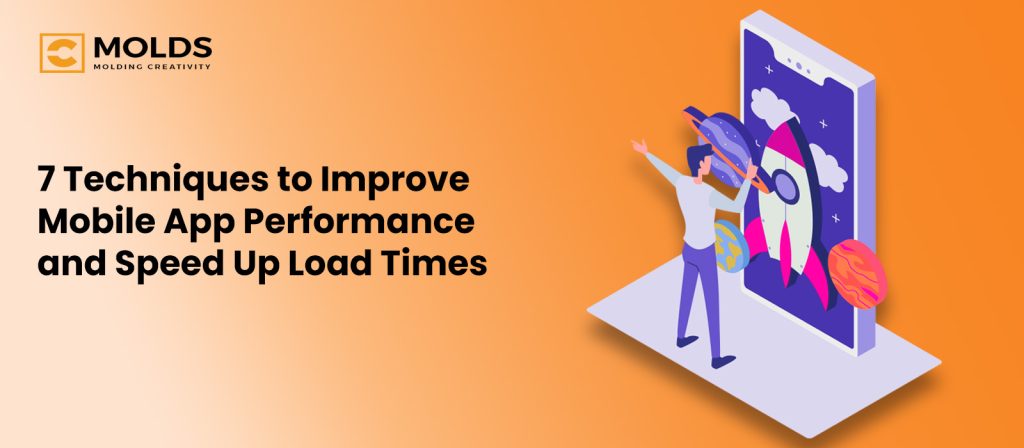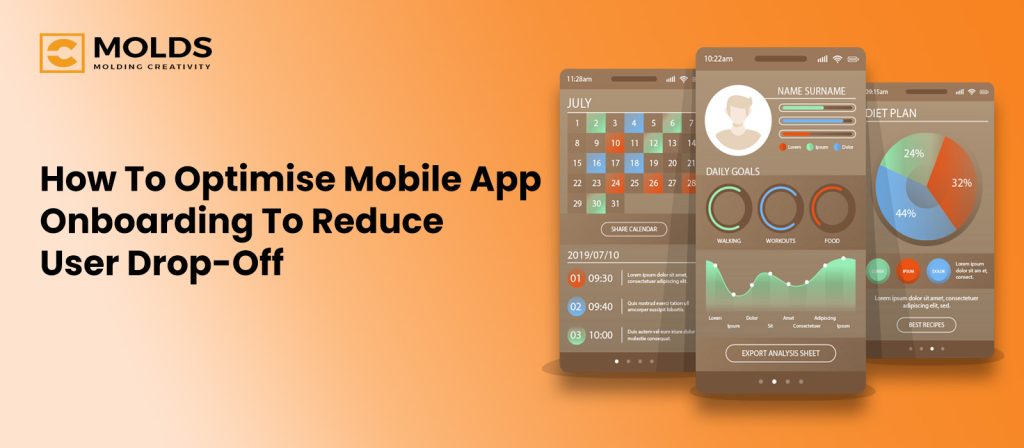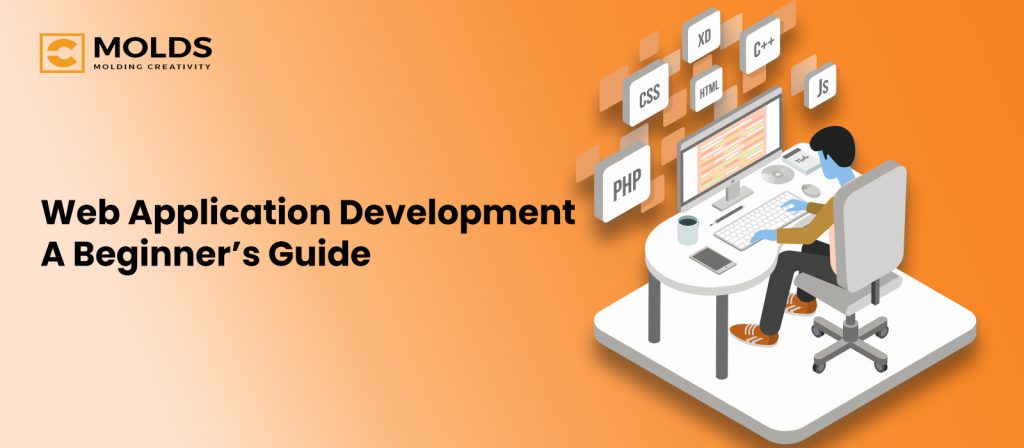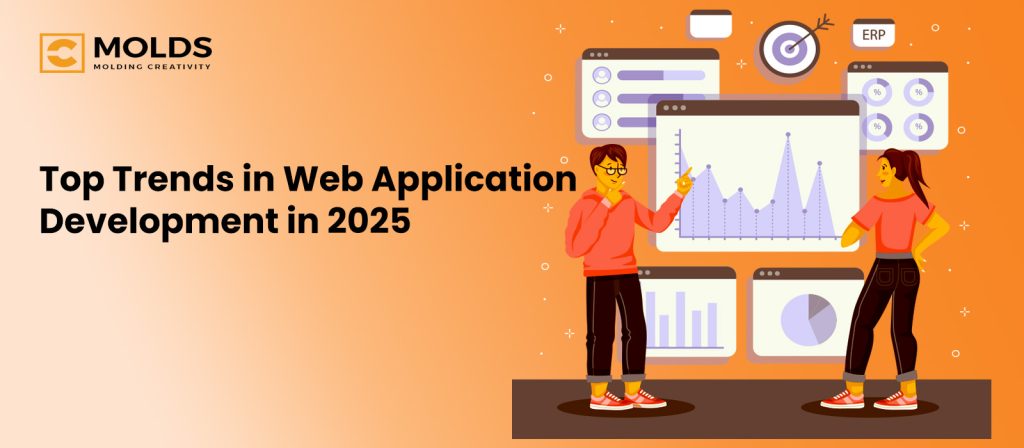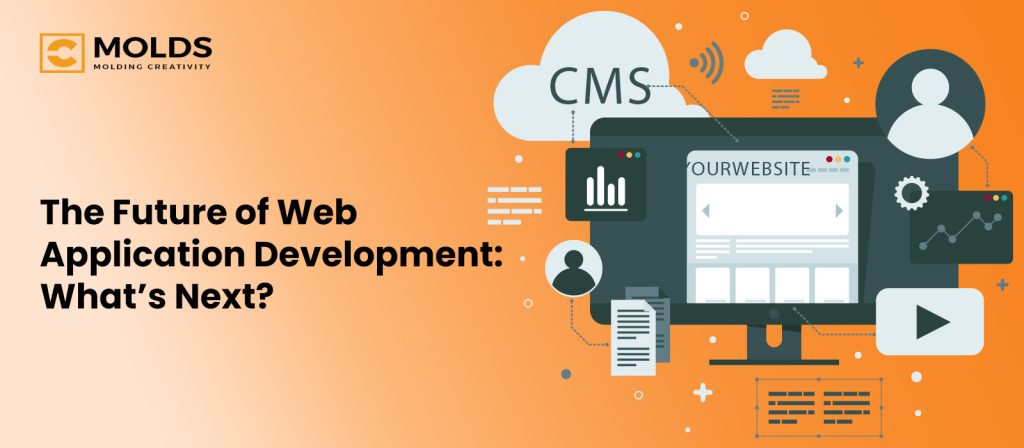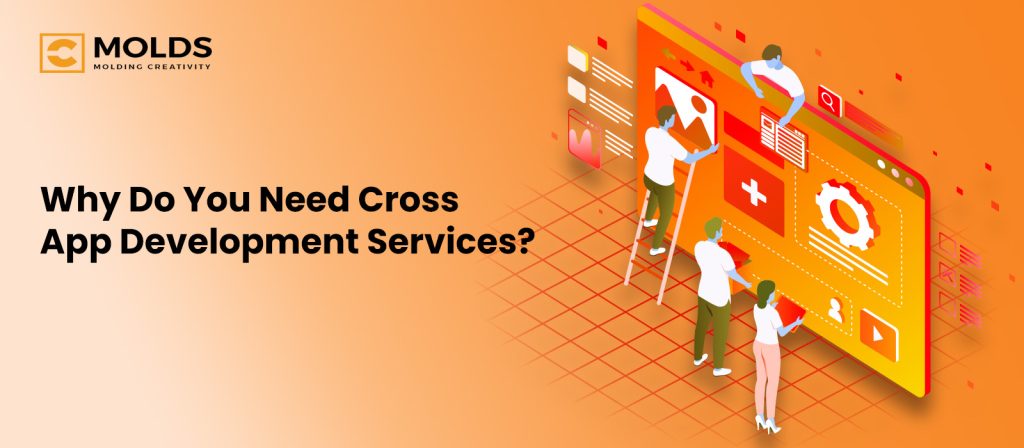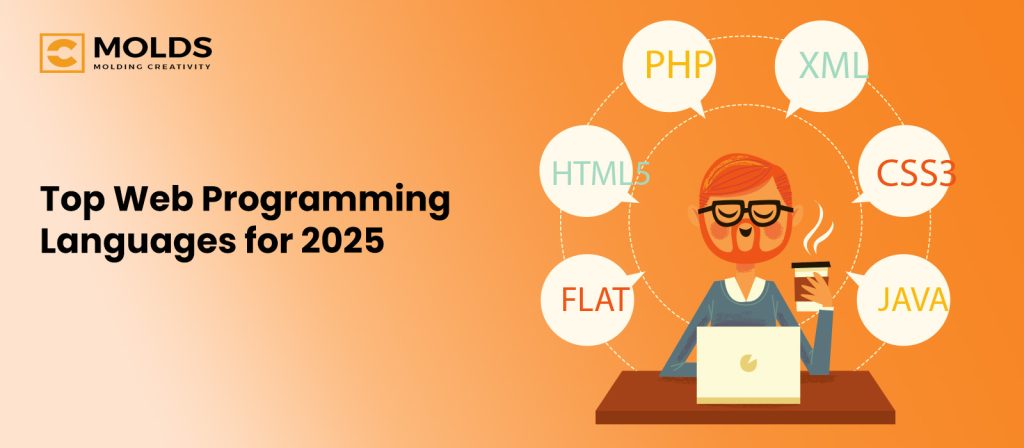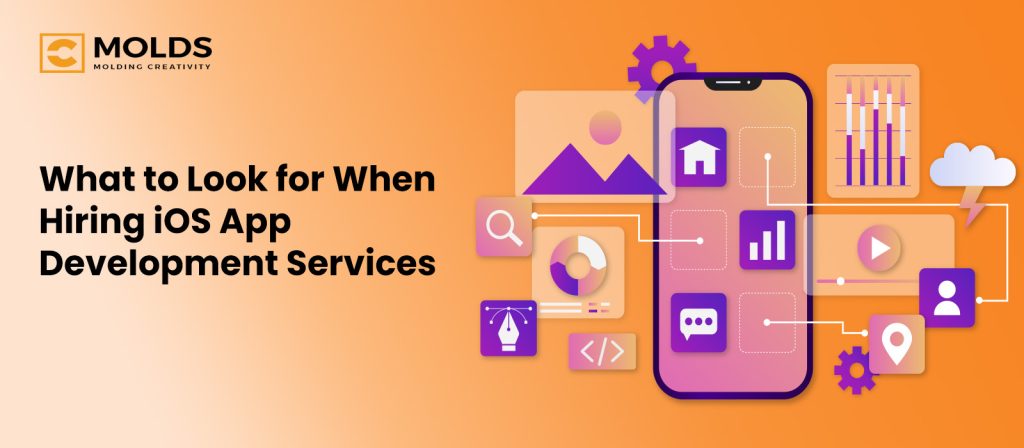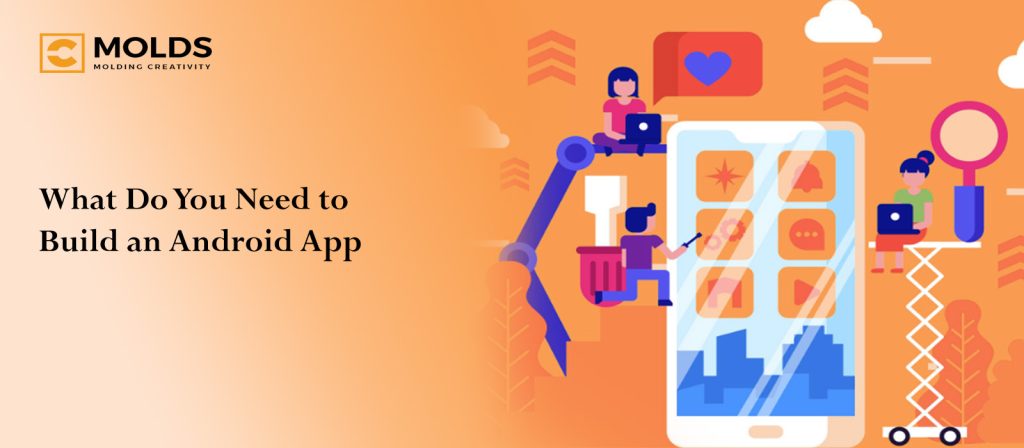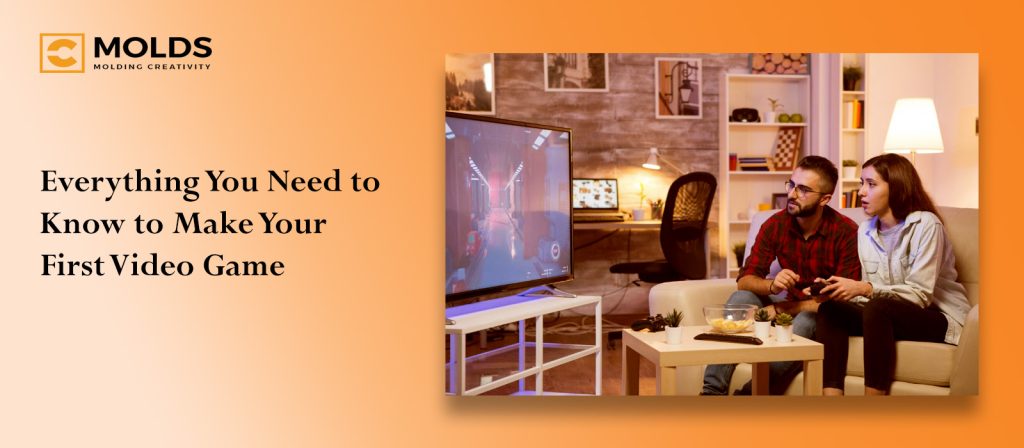As a product development strategist, I would never invest my time, energy and resources into building a tech product with little market demand, or a product with zero value addition, or a product with high-end or more economical alternatives. And even if there is demand, I wouldn’t want my business to go out of cash like 29% of failing startups. And if you too are an aspiring entrepreneur who wants to avoid both of these scenarios – I would suggest you go for an MVP like now-giants including Dropbox, Zappos, X, Amazon, Etsy, Airbnb and so on.
But why do I recommend MVP development to my clients?
Because it differs from traditional software development practices because of development speed and money – and serves better business benefits to early-stage startup founders.
Idea Maturity
Launching an MVP is an ideal approach for startups to see how their product works out practically. Even when you start developing the prototype of your MVP, you’ll identify which areas of your product deserve investment and which ones need more forethought.
Quick Release
If you have a hot idea based on a trend or fad, you can be an early adopter, build an MVP with essential features and release before your potential competitors. Then see if market demand grows and decide to scale.
Cashflows
A complete product with essential features is way more economic to build than a full-fledged product with fancy features. This means startup founders can invest a part of money in development, fraction in marketing and monetization, then use the revenue to gradually grow and scale the architecture.
Technology Stack
A technology stack is so much more than the platform or operating system for which you are launching. It includes the devices and versions, libraries and frameworks, database integrations, APIs, and testing tools, integrated development environments and user interface kits.
When you develop an MVP, you work with a custom technology stack – then test its performance and decide which components you should and should not keep in your tech stack. Then you get a tech stack for the rest of your product’s life.
Serious Product Testing and Feedback
With an actual product, no matter the limited scope of an MVP, you can get real, serious user feedback. Generate discussions around the performance of an asset, let’s say a website, mobile app or business-centric SaaS that’s not just an idea in the thin air – but a product that exists and a product that users use and a product that users would or would not continue to use.
How to build an MVP – an eight-step agile process
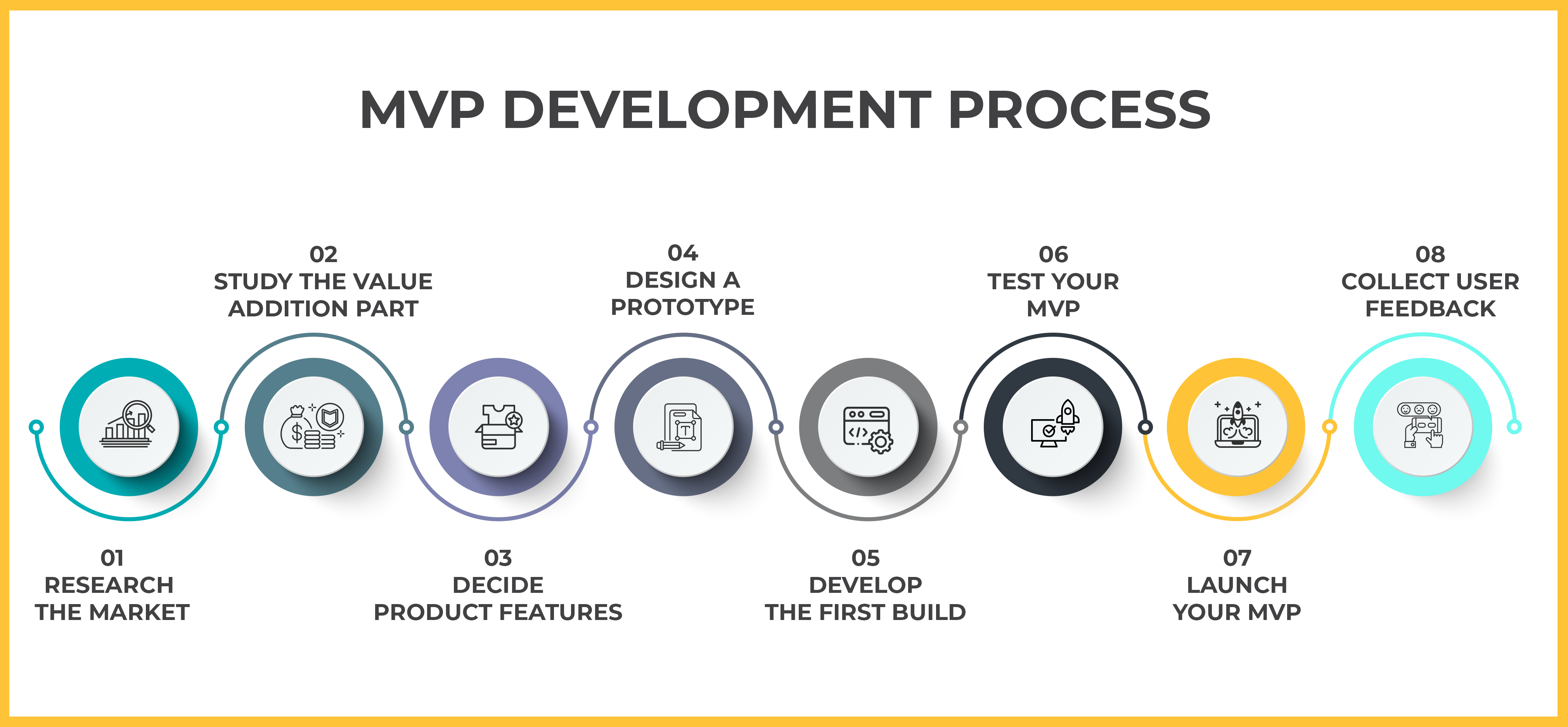
MVP Development Process
1. Research the market
Start researching about your MVP as soon as you become serious about materializing and monetizing your product idea. Bring it down on paper and then come up with at least 2-3 problems your product can solve.
Create a rough user journey
Make a wireframe of the interface of your product. Then start from the first click or tap. See how your users will navigate within your product and for what reasons. This way, come up with at least 5 functions you can provide in your product. Your idea should make a lot of sense after your user journey is ready. You can even use this document when discussing your product idea with web and mobile app developers in Dubai.
Decide target audience
Great products solve pressing problems of a specific audience, period. You have to decide who you want to serve beforehand, then create a user interface and build a brand for that audience.
Now the Middle East, especially Dubai, is rich in culture – part of it comes from its diverse domestic and business population. People from different backgrounds peacefully coexist in the region for mutual economic benefits.
One major quality of the Middle Eastern population is its tech-savvy nature with high acceptance for experience-first products. And because of the vastness, you have to create an ideal customer profile so that your product is something to someone – instead of being everything for no one.
This target audience is a group of users with specific attributes like demographics, hobbies and interests, work arrangements, professions, income segments, medical or geographic history, ethnic backgrounds, strengths or weaknesses, needs, wants or demands – in short, preferences.
Once you have a target audience, or an ideal customer profile who’ll potentially be interested in buying your product, you can build onto factors like market demand and features. Think about the problems they face and jot down their pain points.
Analyze competitors
So, if a product similar to your idea exists already, the best way to build a better one is to see their shortcomings. For example, if your prospective MVP is a mobile app, it must be available on leading stores like Google Play. Go to the listing and read user reviews. See why your competitor has ratings or complaints users have made about the product.
Scan the reviews about technical and fundamental issues about the product, its scope, offerings, customer representation, profile creation – or worst: payment security. This is the gap you want to capitalize on!
Assess market demand
You can do so by conducting surveys and light discussions with potential users in communities. You can find these communities on Reddit, Quora, Facebook groups and so on.
Come up with questions around why or why not a user would buy a subscription of a specific mobile app. For example, if you are building a healthcare app, get into a group with a specific disease. Then start a discussion. Responses would tell you a lot – and even identify competitor gaps and validate your idea.
2. Redo the value addition part
This is the differentiation part. At this stage, you establish the unique selling proposition of your app based on the ideal customer profile you had created in the previous step. Ask yourself questions like:
- How is my product different from existing solutions?
- Is my product better in design or development?
- Is my product free or subscription-based?
- Does my product show ads?
- Will I collect and earn from the data of my users?
- Is my product more economical for users or offers lower pricing structures?
- Can my product fill the gaps of the existing solutions?
Answers to all of these questions will help you decide the value delivery of your product. After all, users don’t pay for a product – but for the benefit and the experience.
3. Decide product features
Speaking from my experience, deciding features is the most critical part of the MVP development process. This is where you frame the ‘M’ and ‘V’ of your P – that is your product has to be viable logically, technically, financially yet minimal.
Now go back to the pain points of your target audience – segment them into 5 most important points, then associate a product feature with each problem. Refine again and keep only the essential features that make your core offering.
4. Design a prototype
While designing the prototype, start from rough sketches that show your product concept – with buttons, sidebars, navigation panels and micro-interactions. Make sure to add a home screen, about us screen, privacy policy and terms and conditions screen, and log in log out screens. Then take each feature and decide the user journey within the app.
From wireframes as the visual building blocks, ask your product designer to create web and app screens. Then term them into high-fidelity, visually working prototypes. Designers at this point should think strategically – but keep all the essential features.
5. Develop the first build
This is the stage that typically needs the most technical efforts: coding, API integration, database integration etc.
I have worked with startup founders from technical as well as business backgrounds. If you’re from a technical background and are working with a co-founder or investor, make sure to keep your development KPIs on track with strong project management. Test each new feature you build and record feedback.
If you are from a business background having financial stakes, you have three options to develop your product.
Hire a team in-house – but this is going to be both: tricky and expensive in the Middle East.
Secondly, you can outsource your MVP development project to an app development company in Dubai. Then communicate weekly with the dedicated project manager and take updates on progress.
While outsourcing is the most technically viable option according to my experience, you can even hand-pick a team of developers and project-manage yourself. This is staff augmentation and most app development companies in the Middle East would help you hire a team in as quick as 48 hours.
6. Test your MVP
With more than 10 MVP testing methods popular in the industry, I’d like to discuss three that give my clients the most precise results – this is the input that we use to iterate and improve the MVP’s first build.
Pre-launch, in-house testing is the most important stage for technical MVP testing. We create testing KPIs around app crashes, performance, loading speed and time, feature functions, and screen adjustments, and data security. This part is more important than startups typically imagine. For your MVP to be successful, you have to battle-test it to an extent where your users don’t download only to realize it is an incomplete product or delivers no value!
In the second session of testing, perform unit tests, device tests, batch tests, functional tests and penetration tests with tools to identify potential issues in the code.
After check-marking your internal standards, identify a group of at least 100 users who are ready to download your product and analyze it.
Hallway Method is a beta testing approach where we advertise the product to a target audience, persuade them to use the product then leave feedback about specific product attributes. We run surveys with questions about accessibility, security, navigation, loading speed and time, features and their usability etc. With decent amounts of qualitative and quantitative data, we fix issues and improve product quality.
7. Launch
After real user testing, your MVP is ready for launch. I typically recommend soft launches to startup founders considering the nature and purpose of MVPs.
Your developers host the product on servers and publish your app on stores. Then you create:
- A landing page to attract search traffic
- Social media handles to create awareness
- LinkedIn business page – if you’re interested in attracting investors and fundraising
- A community profile to generate discussions, answer users’ questions
Start monitoring the interactions of users and visitors right after your launch, be ready to support your users. Your launching strategy could offer a discount or freebie to first 25 users etc.
8. Collect user feedback
Feedback analysis helps you identify the monetization patterns and decide if you need to change the model, introduce a mix, or change nothing!
This step of the process is cyclical – and typically every business does this repetitively to continue providing the best experience to their users. You can choose from a mix of active, passive and in-app feedback collection methods.
The most common is to ask your users to rate the app while they are inside the interface. You can also provide an option to generate a crash report. This way, you get access to all error logs and understand when your app glitches.
Conclusion..
So, this guide on MVP development concludes here. By the last step, your MVP is built and performing in the market, and you are collecting at least little data to understand the market demand and performance. This is the time when you actively focus on user acquisition, monetization mix, and customer engagement.
A digital partner like CMOLDS can expedite this process and share the hassle in your startup journey. If you’re still planning to build and launch an MVP in the Middle Eastern region, we are here to help with research, product development strategy, logistics, funding acquisition, networking with investors and technical development. Let’s build something awesome together!




